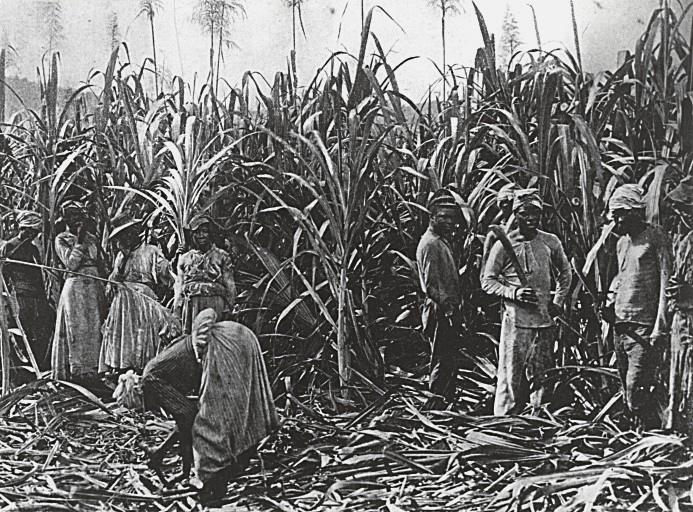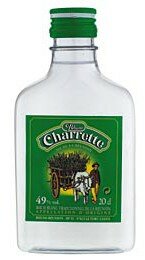The
Saga du Rhum museum, located in St Pierre, in the south of
Reunion, is on the site of the Isautier family estate. Although centred on rum, you learn about Reunion's history and the importance of local sugar cane agriculture and industry.
Set up by the eponymous family in 1845 Isautier is one of the oldest rum distillers on Reunion Island, and it still produces rum today. Rum is the world's fourth most popular spirit after liqueur, whisky and brandy, and ranks first in the colourless spirit category ahead of gin and vodka.
French overseas departments produce 40% of all the rum sold in Europe.

On arrival at the museum you are greeted outside by samples of different varieties of sugar cane (such as Mapou, Tamarin, Guingham or R570). Rum is a spirit produced exclusively through the alcoholic fermentation and distillation either of
molasses from the sugar making process, or cane juice. Explanatory panels explain that the word rum ('rhum' in French) comes from the (English) word "rumbullion" meaning trouble, agitation and great tumult.
 |
| a variety of sugar cane stalks (source; © J.-Y. Hoarau) |
On entering the museum there are more panels explaining the general
history of sugar cane, and we learn that sugar cane arrived in Réunion (and later
Mauritius) in 1665. During the 17th and 18th centuries all of the sugar cane grown on Reunion was used exclusively to manufacture alcohol - sugar production only came later! Reunion grew coffee, spices and food crops, and Ile de France (Mauritius) grew sugar.
 |
| machetes for harvesting sugar cane (still used today) |
Initially on the island sugar cane was used to make a fermented cane wine (
fangourin), then a stronger spirit called
gildiv or tafia, and finally
arack, ancestor of today's rum
. Incidentally the word
gildiv is apparently a contraction of the English 'kill-devil' - no guesses why!
 |
alembics were used to distil rum before
column stills started to be used |
When France lost possession of Ile de France in 1815 it consequently lost most of its sugar production, so sugar cane was encouraged as an export crop on Reunion. With the industrialisation of sugar production at the start of the 19th century and the increase in the number of processing plants, much of the sugar cane juice was used in sugar production. The distilleries used the residue from the sugar crystallisation process – molasses – to manufacture traditional rum from processing plants.
 |
| Cane cutters in Reunion in the 1880s (source) |
In 1928 there were 31 rum distilleries, but by 1972 only three were left: Isautier, Savanna and Rivière du Mat. That year they joined forces to create the
GIE Rhum economic interest group. Together they launched the
Rhum Charette brand and embarked on a diversification programme: improving ageing techniques and creating ranges of punches and liqueurs. Today production capacity has never been so high.
 |
| pile plate, a popular 20cl flat bottle of Rhum Charette (source) |
Sugar cane is now found in 76 countries and is world agriculture's largest crop; 70% of the world's sugar production comes from cane (as opposed to beet). In Reunion it covers about two-thirds of the island's arable land, and
Reunion is the leading European producer of sugar cane - and 7th world-wide.
 |
| Reunion sugar cane field in flower (© Serge Gelabert) |
After this introduction to sugar a walk along a footbridge brings you to a 1940s mill on display; the only complete mill on the island, it has been left in its original location. Such mills are necessary when dealing with sugar cane as the cane's hard stalk casing needs to be crushed to extract the juice.
 |
the mill consists of a steam engine, a fibre-removing machine,
three crushers and an evacuation pipe for residue. |
Each mill consists of three steel cylindrical rollers as the outside casing contains juice-filled cavities which a single pressing can leave intact. This mill, which was in activity until 1980s, crushed 5 tonnes of cane every hour, and the material left over once all the juice has been extracted is known as
bagasse, which can be re-used as an energy source. Reunion's two remaining sugar refineries,
Gol and
Bois Rouge, both use bagasse during the sugar cane production period on Réunion (≈ June to ≈December) to generate electricity; it's currently the island's second source of renewable energy.

Once the juice has been extracted the next stage is
fermentation, which is done by adding yeasts which secrete enzymes and thus transform the sugar into alcohol. For traditional rum fermentation takes 24 hours, and produces an alcoholic wine with an alcohol level of 8-8.5° which is ready to be distilled. The longer the fermentation and the purer the substances the more differences in taste there are.
Then comes the
distillation which is when the product acquires its ultimate flavour. The
column still allows the distiller to choose between the non-alchoholic substances which should be retained and those which are likely to reduce the rum's market value by giving it an unpleasant odour or taste.
 |
| old copper column still |
Finally comes the
blending, storage and ageing in wooden casks. Often these casks are old cognac or whisky barrels. For example Old Rum matures for at least three years in oak barrels of no more than 650 litres. Due to the tropical climate in Reunion evaporation rates (the
angel's share) are higher than in more temperate regions.
 |
| casks used for storing and ageing |
Traditional industrial rum is made from molasses, and traditional agricultural rum is made from cane juice. The 2012 production of the Isautier distillery in figures:
- 1 million litres of traditional industrial rum for 2 388 tonnes of molasses.
- 750 000 bottles of light rum for 380 tonnes of molasses (light rum has practically the same alcohol content as white traditional rum but a more neutral taste and is widely used in the liquor industry especially for making punch).
- 36 000 bottles of traditional agricultural rum for 226 tonnes of sugar cane juice.
 |
| A bottle label from Savanna |
Even though alcohol consumption is lower in Reunion (10.5 l) than in mainland France (12.9 l), alcohol addiction amongst men is more frequent in Reunion. There are more teetotallers in Reunion compared to mainland France, but there are also more binge-drinkers. Although rum consumption in Reunion has decreased (in favour of imported drinks such as whisky, beer and wine), rum is still the island's most popular alcoholic beverage. Overall alcohol consumption has decreased by 41% in the last 30 years.
 |
| "I'm stopping rum" a fresco at Le Port prison (source) |
After a final section of the museum on the history of Reunion island, rum and sugar cane, the visit ends with a visit to the rum-tasting room. Cheers!
 |
| part of the selection of rums that can be tasted (source) |
Useful links:
 |
| a sugar cane juice machine |
Further reading:
You might also like:














